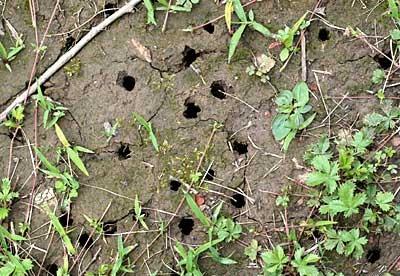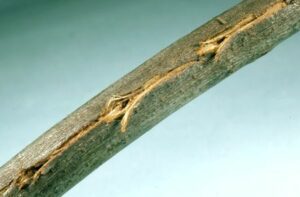Cicadas Are Back. Are You Prepared for Brood X?
What is a Cicada?
Cicadas are sometimes called Locusts, but they are actually related to more commonly seen landscape pests like Aphids and Leafhoppers. There are two different types of Cicadas – annual cicadas and periodical cicadas. Annual Cicadas appear in smaller numbers every year, while periodical cicadas come out every 13 or 17 years and have extremely large populations. Brood X, for example, is expected to have billions – yes I said BILLIONS – of insects this summer.
When Will Brood X Appear?
Soil temperatures need to be 65 degrees for roughly two weeks to trigger the emergence. The first signs of the hatching will be small holes in the ground or “chimneys.” When the nymphs emerge from the soil as adults, they leave behind these small exit holes in the soil. Adult Cicadas tend to hang around for about 4-6 weeks after emergence to feed and mate. They will begin to die off in mid-summer.


Why Do We Fear These Insects So Much?
Many people simply don’t like the look of these giant insects. Their beady red eyes look menacing and their sheer size (up to 3 inches in length) can make one shudder. Also, as they grow and shed their shells, the hollow skins are left behind on trees and shrubs. They look like prehistoric dino skeletons.
Cicadas can also be a nuisance because of the amount of noise they make. When large numbers of these insects get together, the clicking and humming can reach sound levels comparable to a running lawnmower.
They can also wreak havoc on smaller trees and young landscape plants. When the females lay eggs, they create slits in the bark of the plants. These slits can cause the branches to lose access to valuable nutrients and water transported by the sap of the tree or to break off entirely.


Protecting The Landscape From Cicada Damage
Cicadas don’t really cause significant damage to mature landscape plants or to structures and buildings. If your property is mostly older landscaping, they will likely be more of an annoyance. If the landscape is younger, there are a few things that can be done to help reduce potential damage.
- Wrap younger or newer landscape plants with mesh or breathable cloth. This can prevent the Cicadas from crawling up the trunks or causing puncture damage during feeding or egg-laying.
- Avoid installing new plantings during the time of emergence. In the Mid-Atlantic, the Cicadas emerge from late May to July. Luckily, early summer is not an ideal time to plant new landscaping. High temperatures and low natural rainfall cause new plants to go into shock. So postpone new landscaping projects until fall.
- Remove insects from young landscape plants using a firm spray from a garden hose.
Fun Facts About Cicadas
- Cicadas have one of the longest life cycles of any insect.
- Their long life cycle may be the reason they don’t have many natural predators.
- Cicadas are becoming a delicacy in the culinary world – but stay away if you have a shellfish allergy. They’re high in mercury.
- There is a natural predator called a Cicada Killer Wasp. If you see these ladies flying around – leave them be. They may look scary, but they don’t harm people.










